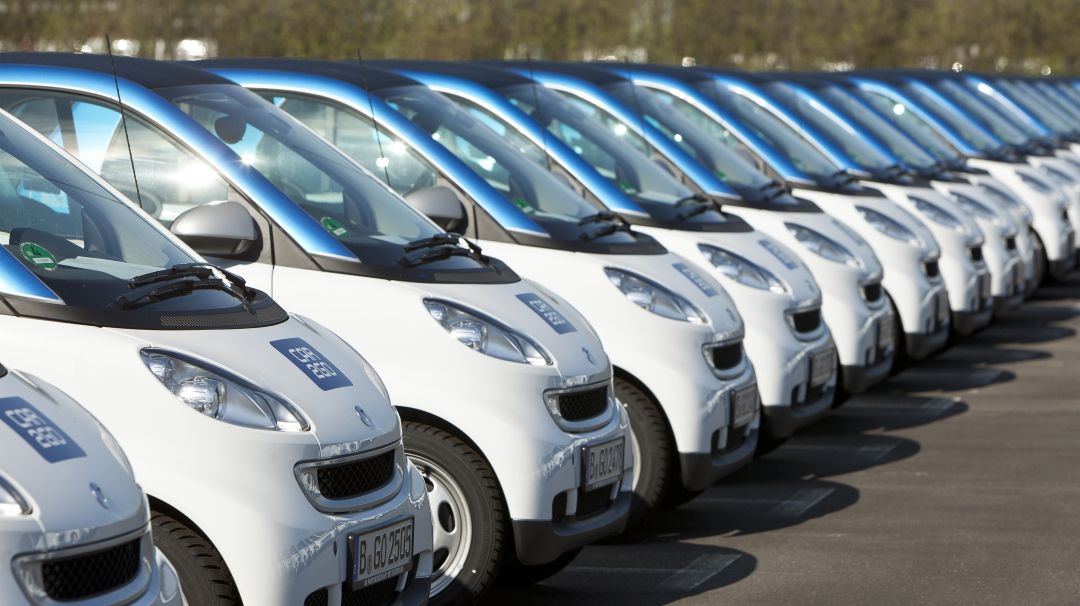Yes, Carsharing is a great invention. Technological advance and the sharing economy have made it a well-known and liked concept (at least in major cities in the western world). It’s fun and makes a spontaneous trip to IKEA so much easier. But we should try to take a step back for a moment and see the bigger picture – see it as more than the mere sharing of an object of daily use as the name Carsharing suggests.
According to S. Shaheen, a shared car has the potential to replace up to thirteen privately owned cars (Shaheen, 2015). At first glance this ratio of 1:13 might seem too optimistic to some of you. But if you take into account that the average privately owned car is used only during five percent of its active existence (Bates & Leibling, 2012), it suddenly seems easy to replace many of those (almost unused) cars. In addition, using a shared car means paying by the minute. Understandably, this shows the cost of driving more plainly compared to the yearly depreciation of a privately owned car that only needs to be bought once. Therefore, people who use Carsharing become more cost-conscious, drive less and use other means of transportation instead. So, even if we estimated very conservatively that one shared car can maybe only replace five private cars, that still means that with the further rise of Carsharing a vast number of cars will disappear from our urban areas.
Right now, a significant share of public space in cities is used for car parking. In addition to parking lots and garages, almost every urban street is lined with parking areas. Just image what urban design possibilities freeing up some of this space in our inner cities will give us. It would give us the possibility to make our cities less car-centric and more pedestrian-friendly, while at the same time making it more beautiful. The relevance of this issue becomes clear when we recognize that this technology has the potential to affect most of us: right now, already 50% of the world’s population live in cities or towns, but according to WHO estimates, this number will rise even higher to 70% by 2050.
Apart from the implications on what our cities might look like with far fewer cars, this reduction in the number of cars will entail further positive effects. For the environment, the production of fewer cars means less resources being used. Furthermore, cars used for Carsharing are comparatively new and therefore emit less CO2 than the average car being used right now. In the best case (which is happening increasingly) shared cars are powered by an electric drive, making zero-emission driving possible.
And finally one more area where Carsharing comes in handy: Carsharing companies are starting to connect their shared electric vehicles to the power grid, thus serving as a power storage. This can help meeting demand at peak times while also making sure that less energy is being wasted in times of low demand. That kind of storage possibility can help make renewable, unpredictable sources of energy more viable. The technology still needs to be rolled out on a large scale, but companies like Nissan or Tesla have already taken first successful steps as explained in articles on greenbiz or financial times.
I hope I could help you see that Carsharing is more than a convenient way to from A to B. In this article I primarily outlined the possibilities Carsharing implies for urban planning and environmental protection.
And finally, if you haven’t tried Carsharing yet – do it! Even if all the above reasons can’t persuade you to support it, you could still try it for the exciting experience of driving an electric car.
References:
Shaheen, S., N. Chan, and H. Micheaux (2015). “One-way carsharing’s evolution and operator perspectives from the Americas,” Transportation, Volume 42: 519-536.
Bates, J. & Leibling, D. (2012). “Spaced Out: Perspectives on parking policy”, RAC Foundation.


For many years the Dutch government has promoted carpooling as a means to reduce congestion on all major auto routes. A share ride to Ikea is more imaginable then picking up someone during your daily commute. The ever faster lifestyles we are exposed to won’t allow an extra hour picking up workmates in the morning and another hour after your job has finished. Daily commuting makes up most car use and despite a lot of government effort and subsidizing, it just did not work out in the long run.
Greenwheels has started twenty years ago with a concept that provides cars all over town. Hop in and take off. They have been successful to some extend and have just sold the majority of their company to Volkswagen. Perhaps they were ahead of their time, because of unavailability of consumer connectivity. After all you do not see concepts like this dominating, the urban and intercity transportation industry.
Blablacar also has had success, especially for longer trips. It would be great to see ridesharing increasing significantly it would reduce a big skunk of externalities that vehicles produce.